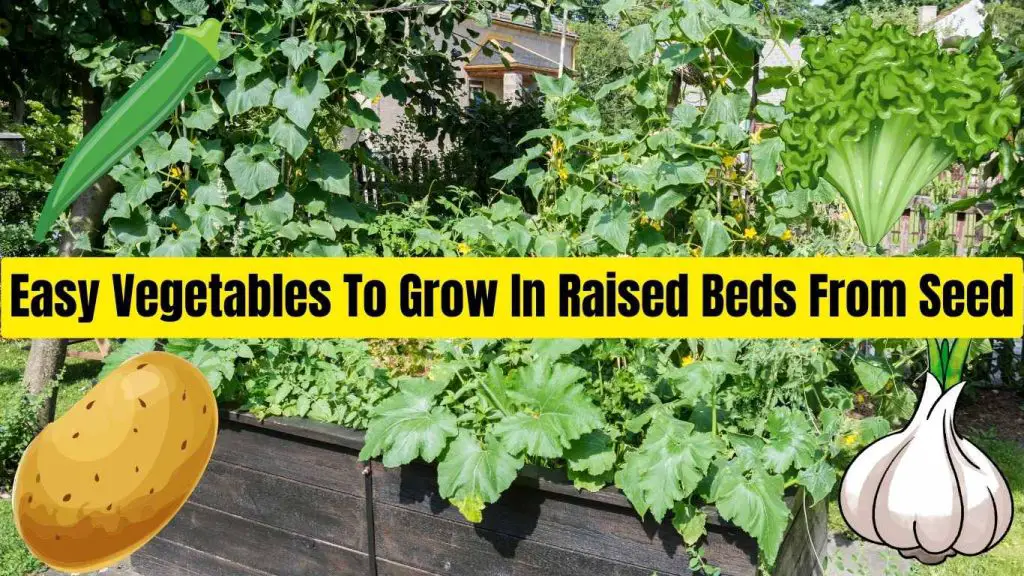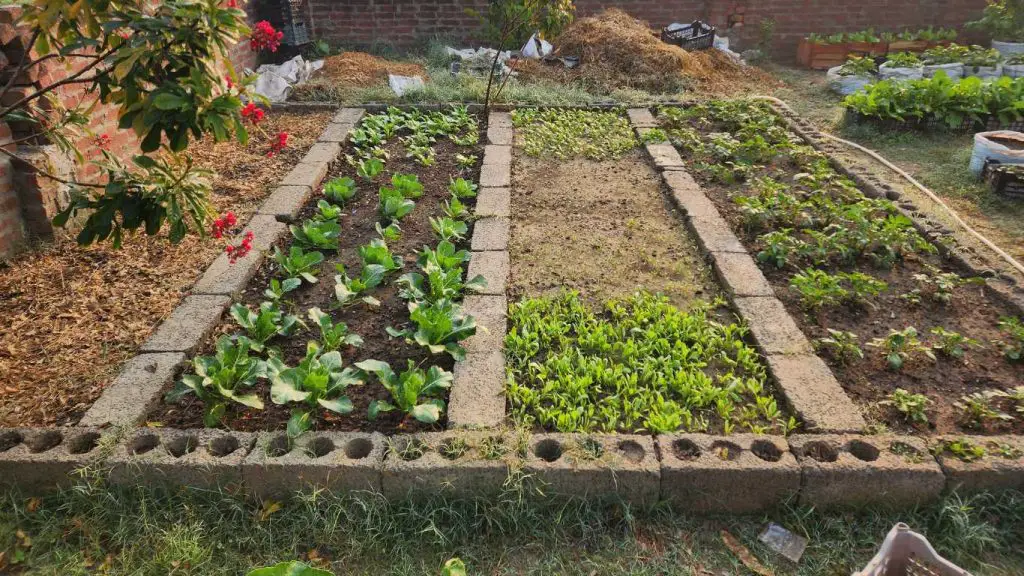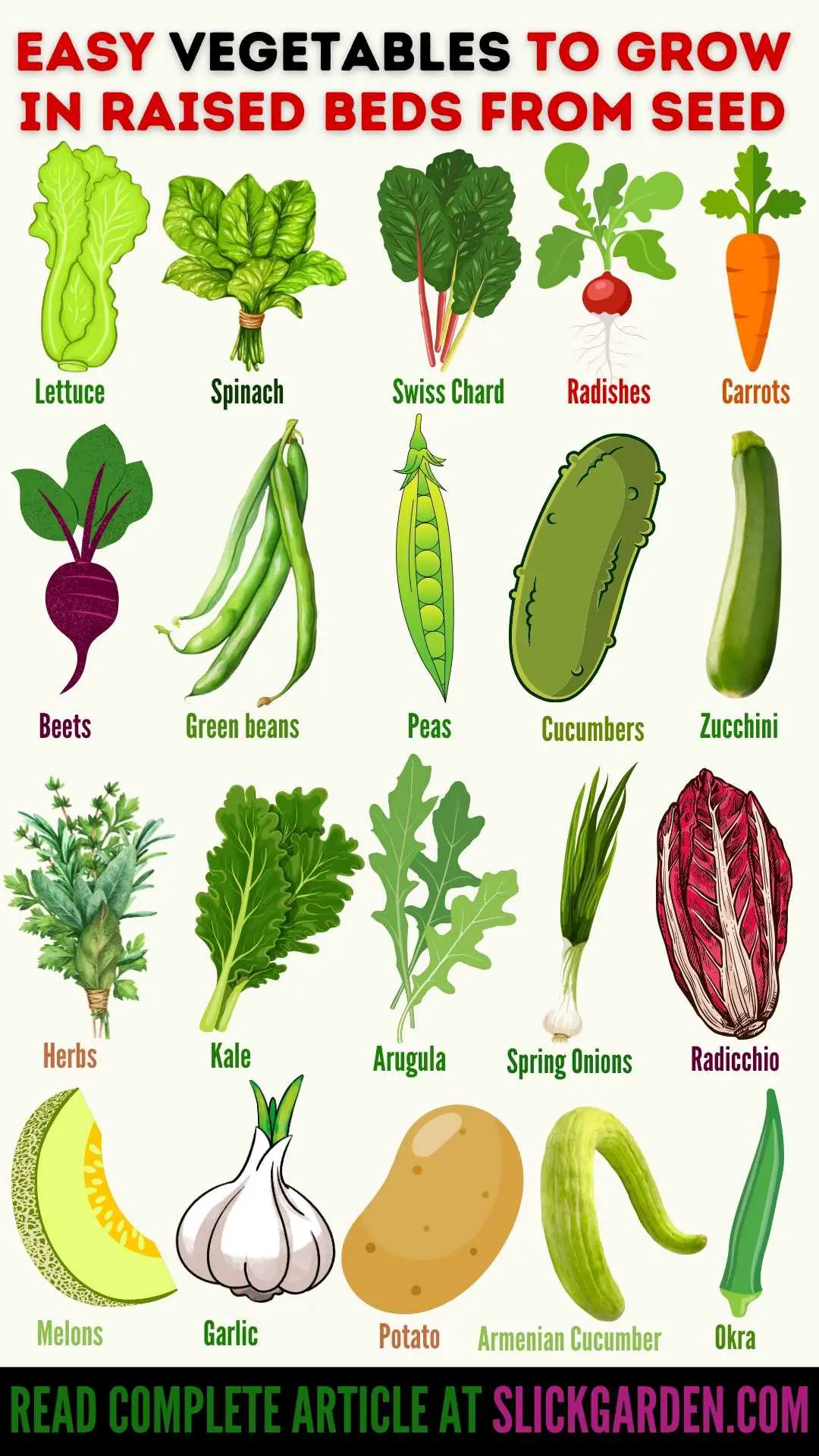Exploring the realm of growing your own vegetables can be incredibly rewarding and surprisingly achievable, particularly when you opt for raised beds.

If you’re new to gardening or simply prefer a straightforward approach, starting vegetables directly from seeds in raised beds is the way to go. This approach empowers you to have control over the soil quality and drainage, effectively managing pests and creating optimal conditions for your vegetables to flourish.
In this blog post, we’ll explore some vegetables that are incredibly simple to cultivate in raised beds, resulting in a bountiful harvest for your hard work. Whether you’re an experienced gardener or new to the world of gardening, these vegetables will bring joy and abundance to your gardening journey.
Understanding The Benefits Of Growing Vegetables From Seed
The first step to developing a successful raised bed vegetable garden is realizing the advantages of starting vegetables from seed. Starting from seed gives you total control over the entire growing process and lets you customize the environment to meet the unique requirements of each plant.

This section will discuss the benefits of growing vegetables from seed and encourage you to start this fulfilling hobby, regardless of your level of gardening experience.
The wide range of vegetable options is one of the main advantages of starting from seed. Nurseries might only have a small assortment of plants, but seed catalogs and internet resources offer a wide range of options, including rare hybrids and heirloom varieties.
This gives you the opportunity to explore and taste new vegetables that might not be easily found as transplants. Imagine tasting the sweetness of a lesser-known tomato variety or harvesting a vivid purple cauliflower. There are countless options!
Furthermore, starting from seed is less expensive than buying transplants. Many times, a single seed packet will hold hundreds or even thousands of seeds, allowing you to grow multiple plants at a fraction of the price of purchasing transplants.
This cost benefit is particularly advantageous if you intend to grow vegetables on a regular basis throughout the growing season or if you have a sizable raised bed.
Additionally, you have more control over the general well-being and caliber of your plants when you start from seed. You can be sure that the seeds you choose are disease-free and bred for maximum growth in your particular climate by choosing them carefully and from reliable sources.
Not only that, but you can steer clear of any toxic pesticides or chemicals that might have been applied to store-bought transplants.
Top 23 Easy Vegetables To Grow In Raised Beds From Seed

Now that you have a good grasp of the numerous advantages of growing vegetables from seed, it’s time to delve into the top 23 effortlessly grown vegetables in raised beds.
From a variety of fresh produce to hearty vegetables, these selections have been thoughtfully chosen to guarantee a thriving raised bed garden. So, let’s get ready to get our hands dirty, delve into the earth, and experience the satisfaction of cultivating your own vegetables from seed.
1. Lettuce: Lettuce is a versatile and quickly growing vegetable that works well in raised beds because it comes in a variety of varieties. Plant a variety of lettuce varieties to ensure a steady harvest and enjoy fresh salads throughout the season.
2. Spinach: Rich in nutrition, spinach grows well in raised beds. When the leaves are still young and tender, harvest them to add to sautés or salads.
3. Swiss Chard: This vibrant, nutrient-dense vegetable is a need for any raised bed. As they grow, continue to gather the outer leaves for an abundant supply.
4. Radishes: These crunchy, peppery root vegetables grow quickly from seed and are incredibly simple to grow. Savor their flavorful burst and vivid colors in salads or as a crunchy snack.
5. Carrots: These satisfying and sweet root vegetables are simple to grow in an elevated bed with a little extra depth added. Try a variety of varieties for different hues and tastes.
6. Beets: Another adaptable root vegetable, beets are easy to grow and provide a good source of greens as well as tasty roots. Pick young beets for a delicate treat or leave them to grow for larger, more earthy-flavored roots.
7. Green beans: Green beans work well in raised beds, whether you like the bush or pole varieties. Savor a plentiful supply of soft and tasty beans all summer long.
8. Peas: A great addition to any raised bed garden, peas are a vegetable of the cool season. Savor their delicious pods directly from the plant by supporting them with stakes or trellises.
9. Cucumbers: Trained to climb trellises or cages in raised beds, cucumbers are ideal for vertical gardening. Savor fresh cucumbers for pickling or salad dressings.
10. Zucchini: Because of their abundant yield, zucchini plants make great raised bed options. Their big leaves offer excellent ground cover, retaining moisture and inhibiting the growth of weeds.
11. Herbs: Raised beds are a great place to grow herbs like cilantro, parsley, and basil. Gather their fragrant leaves to infuse your recipes with new tastes.
12. Kale: A nutrient-dense superfood that grows easily, kale is a leafy green. It is a great year-round option for raised beds because of its sturdy leaves that can withstand lower temperatures.
13. Arugula: Arugula’s peppery taste gives salads and sandwiches a delightful burst. Raised beds are ideal for this heat-resistant and quickly growing green.
14. Spring Onions: A great addition to any raised bed, these mildly flavored onions grow quickly from seed. Gather the tender green tips or let them grow into mouthwatering bulbs.
15. Radicchio: A stunning pop of color for any raised bed, radicchio boasts vivid red leaves. When the leaves are young, harvest them for their milder flavor; when the leaves mature, they will have a distinct bitter flavor.
16. Melons: These juicy fruits, which range from watermelons to cantaloupes, can be grown vertically in raised beds. When they are at their ripest, pick them to savor the sweet taste of summer.
17. Garlic: Garlic cloves should be planted in an elevated bed with well-drained soil, spaced 4-6 inches apart and 2 inches deep. Water frequently, and harvest as soon as the tops start to turn yellow and topple over. Savor the fresh garlic that grows in your raised bed garden!
18. Potato: Raised bed gardens offer well-drained soil, which lowers the possibility of waterlogging when growing potatoes. Better aeration is encouraged by the raised structure, which deters rot and illness.
Raised beds also allow for simpler harvesting and best use of available space for increased potato yields.
19. Armenian Cucumber: The Armenian cucumber, sometimes referred to as the snake cucumber or serpent cucumber, is a kind of cucumber with thin, delicate skin and a mild, sweet flavor.
In spite of its name, it belongs to the melon family and is not botanically related to regular cucumbers.
20. Okra: Okra, a flowering plant valued for its edible green pods, is also referred to as ladyfinger or gumbo. It is grown worldwide in tropical, subtropical, and warm temperate climates and is a member of the mallow family (Malvaceae).
21. Turnip: Turnips are widely grown for their nutritious greens and roots, which can be prepared in a variety of ways. The root can be used in many different culinary applications because of its crisp texture and mildly peppery flavor.
Not only are turnip greens high in nutrients, but they can also be cooked and added to salads.
22. Pumpkin: A winter squash variety known as “pumpkin” is usually spherical, smooth, and slightly ribbed on the outside, with a deep yellow to orange coloration.
It is a well-liked and adaptable component in many different culinary applications. Pumpkins are frequently used in both savory and sweet recipes because of their well-known sweet and nutty flavor.
23. Cress: Many leafy green plants that are frequently used as salad greens or herbs are referred to as cress. Garden cress (Lepidium sativum) and watercress (Nasturtium officinale) are the two most popular varieties of cress.
Vitamin K, vitamin C, and beta-carotene are among the many vitamins and minerals that are abundant in both varieties of cress. They can provide nutrients to a diet that is well-balanced and are low in calories.
These twenty-three simple vegetables will give you plenty to grow and eat from your raised beds. Try out various combinations, make notes about what seems to work best in your garden, and enjoy the satisfaction of growing your own delicious produce from seed to plate.,
Now that you know which 23 vegetables are the simplest to grow from seed in raised beds, it’s time to embrace your inner green thumb and start this fulfilling journey. The advantages of growing your own veggies are enormous, regardless of gardening experience level.
